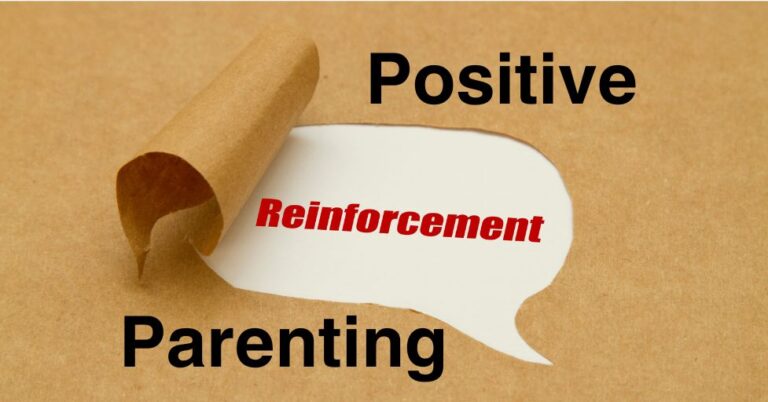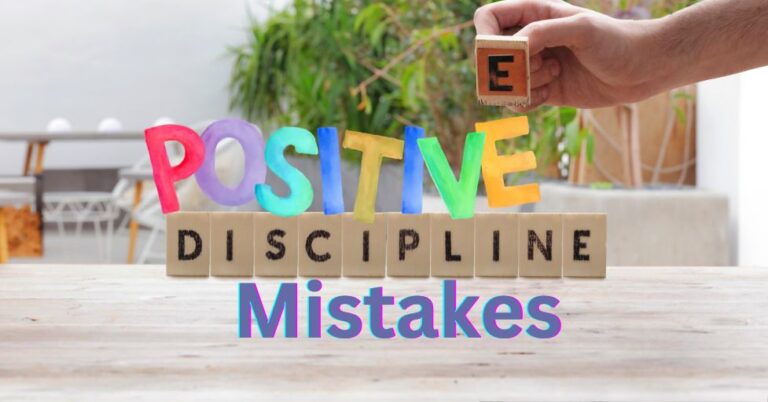7 Powerful Ways for Managing Teen Defiance in 2025
Disclosure: This post may contain affiliate links, meaning I may get a small commission if you decide to make a purchase through my links, at no cost to you.

Managing Teen Defiance in 2024
Ah, the joys of managing teen defiance! If you’re reading this, chances are you’ve found yourself in a battle of wills with your teen, wondering where that sweet child who used to hang on your every word disappeared to.
Don’t worry, you’re not alone! Did you know that nearly 50% of parents report struggles in dealing with defiant teenagers at least once a week? Yikes! But here’s the good news: positive discipline techniques can be a game-changer in managing teen defiance.
In this guide, we’ll explore practical strategies to help you navigate these turbulent waters and strengthen your relationship with your teenager. Let’s dive into the world of teenage rebellion using positive parenting techniques.
Related:
Positive Discipline Vs Punishment Worksheet
1. Monopoly: Understanding the Game of Teen Defiance
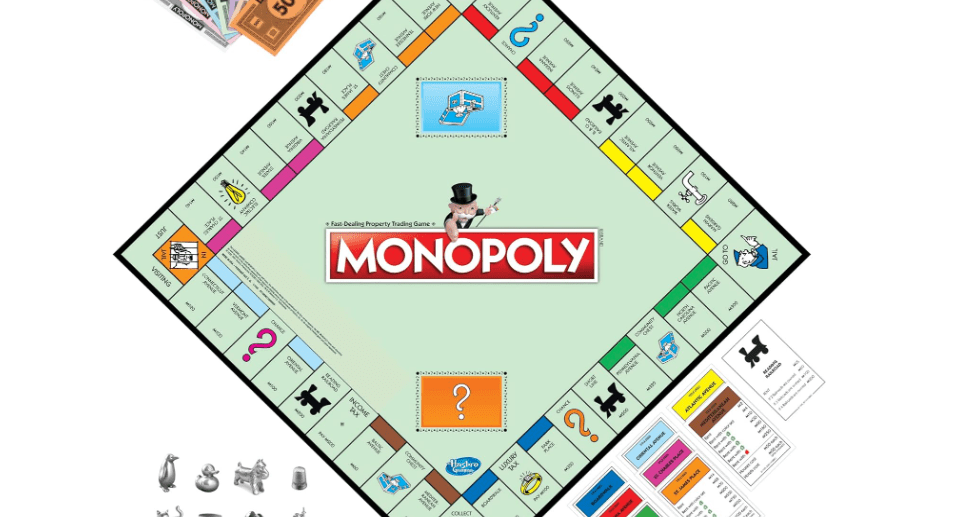
Let me tell you about the wild ride of parenting teenagers! It’s like playing a never-ending game of Monopoly, where the rules keep changing and you’re not sure if you’re winning or losing.
As a mom of four, I’ve been around this board more times than I can count, and I’ve learned a thing or two about teen defiance along the way using positive parenting techniques.
Explore the psychological reasons behind teenage rebellion
So, why do our sweet little angels suddenly turn into rebellious monsters? Well, it’s not just to drive us crazy (though sometimes it sure feels that way). There’s actually some pretty interesting psychology behind it.
First off, let’s talk about brain development. Did you know that the teenage brain is like a construction zone? Yep, it’s true.
According to the National Institute of Mental Health, the prefrontal cortex – that’s the part responsible for decision-making and impulse control – isn’t fully developed until around age 25. No wonder our teens sometimes act like they’ve lost their marbles!
But it’s not just about brains turning to mush. Teenagers are also on a quest for independence. They’re trying to figure out who they are and where they fit in the world. It’s like they’re playing their own game of Life, and sometimes that means pushing back against the rules we’ve set.
I remember when my oldest, started questioning every single decision my husband made. “Why do I have to be home by 10?” “Why can’t I go to that party?” It was exhausting! But looking back, I realize he was just trying to assert his independence and test the boundaries.
Identify common triggers for defiant teen behavior and teenage mood swings
Now, let’s talk about what sets off the fireworks. In my experience, there are a few common triggers that can turn your teen into a mini-Godzilla:
- Feeling controlled: Teens hate feeling like they’re being bossed around. I learned this when I tried to micromanage my daughter’s homework schedule.
- Peer pressure: Sometimes, it’s not us they’re rebelling against – it’s the pressure to fit in with their friends. My daughter once dyed her hair blue. Was I thrilled? Nope. But I realized it was more about impressing her friends than annoying me.
- Stress and overwhelm: High school is tough, y’all. Between classes, extracurriculars, and social drama, our kids are under a lot of pressure. Sometimes, defiance is just their way of blowing off steam.
- Lack of sleep: Seriously, sleep deprivation can turn anyone into a grump. The National Sleep Foundation recommends 8-10 hours of sleep for teenagers, but how many actually get that? Not mine, that’s for sure!
Recognize the difference between normal teen independence and problematic defiance

Okay, so how do we know when we’re dealing with normal teenage stuff versus something more serious? It’s not always easy, but here are a few things I’ve learned to look out for:
Normal independence might look like:
- Wanting more privacy (hello, locked bedroom doors!)
- Questioning rules and authority (prepare for lots of “but why?”)
- Experimenting with different styles or interests
Problematic defiance, on the other hand, might involve:
- Consistently breaking important rules
- Engaging in risky behaviors that could harm themselves or others
- Showing aggression or violence
I remember freaking out when my daughter started listening to music I thought was inappropriate. But you know what?
That was just her exploring her own tastes. If your teenager starts skipping school and hanging out with a crowd you don’t trust – that’s when you know you have a real problem on your hands.
Learn how to “pass Go” and collect your parental sanity!
Alright, so how do we keep our cool when it feels like we’re stuck in teen defiance jail? Here are a few strategies that have helped me stay sane:
- Pick your battles: Not everything is worth fighting over. I’ve learned to let the small stuff slide (like messy rooms) and focus on the big issues.
- Practice empathy: Try to remember what it was like being a teenager. It’s tough! A little understanding can go a long way.
- Set clear expectations: Make sure your kids know what the rules are and why they’re important. No surprises! Even better, come up with the rules together as a family,
- Give choices: When possible, offer options. It gives teens a sense of control without undermining your authority.
- Take care of yourself: Seriously, don’t forget about your own needs. Take a bubble bath, go for a walk, or indulge in your favorite snack. You can’t pour from an empty cup!
Remember, parenting teens is like a marathon, not a sprint. There will be ups and downs, but with patience and understanding, you’ll make it to the finish line.
And hey, if all else fails, you can always threaten to show up at their school in your pajamas. I’ve heard it works like a charm!
2. Jenga: Building a Strong Foundation with Positive Discipline

Let me tell you, raising four kids is like playing a never-ending game of Jenga. You’re constantly trying to keep everything balanced, and one wrong move can send the whole tower tumbling down.
But here’s the thing: I’ve found that positive discipline is the secret sauce to keeping that tower standing tall and strong.
Define positive discipline and its core principles
So, what exactly is positive discipline? Well, it’s not about being a pushover or letting your kids run wild. Nope, it’s all about teaching and guiding our kiddos with respect and understanding.
Think of it as being firm and kind at the same time – like a warm hug and a stern look rolled into one.
The core principles of positive discipline are pretty straightforward:
- Mutual respect: Treat your kids the way you want to be treated. It’s that simple.
- Understanding the reasons behind behavior: Kids don’t just act up for no reason. There’s always something going on under the surface.
- Effective communication: This means listening as much as talking. Maybe even more!
- Teaching life skills: We’re not just trying to stop bad behavior; we’re trying to build good humans.
- Encouragement: Catch ’em being good and make a big deal out of it!
I remember when one of my siblings kids was going through a biting phase. Instead of just punishing her, they tried to figure out why she was biting.
Turns out, she was feeling overwhelmed and didn’t know how to express herself. Once they understood that, they could teach her better ways to communicate her feelings.
Contrast positive discipline with punitive approaches

Now, let’s talk about the difference between positive discipline and the old-school punitive approach. You know, the whole “spare the rod, spoil the child” thing? Yeah, not so much.
Punitive discipline is all about punishment. It’s like playing whack-a-mole with bad behavior. Kid acts up, you punish them. Rinse and repeat.
But here’s the kicker: it doesn’t actually teach kids why their behavior was wrong or how to do better next time.
Positive discipline, on the other hand, is about teaching and problem-solving. It’s like being a coach instead of a referee. You’re not just calling fouls; you’re showing your kid how to play the game better.
I’ll be honest, I used to be all about time-outs and taking away privileges when my older kids misbehaved. But you know what? It just led to more power struggles and resentment.
When I switched to positive discipline with my younger two, it was like night and day. We started working together to solve problems instead of butting heads all the time.
Understand the long-term benefits of using positive discipline techniques
Okay, so positive discipline sounds great, but does it actually work? Heck yes, it does! And the benefits are seriously long-lasting.
According to a study published in the Journal of Family Psychology, kids raised with positive discipline techniques are more likely to develop:
- Better self-esteem: They feel capable and valued.
- Stronger problem-solving skills: They learn to think through challenges instead of just reacting.
- Improved emotional regulation: They can handle their feelings better.
- Greater independence: They’re more self-reliant and responsible.
I’ve seen these benefits firsthand with my own brood. My older kids, who got a mix of positive and punitive discipline, tell me they struggle sometimes with emotional regulation. But my younger two? They’re like seem to be much better when it comes to handling their feelings.
And let me tell you, the difference in our family dynamics is night and day. My husband and two sons used to have screaming matches that would make your ears bleed. Now? They actually talk things out. It’s not always perfect, but it’s a whole lot better.
Related:
Positive Discipline in Everyday Teaching
Positive Discipline for Single Parents
10 Positive Discipline Mistakes and How to Avoid Them
Stack the odds in your favor for a more harmonious household
So, how do you actually put positive discipline into practice? Here are some tricks I’ve learned along the way:
- Use “I” statements: Instead of “You’re so messy!”, try “I feel frustrated when the living room is cluttered.” It’s less accusatory and opens up dialogue.
- Offer choices: Give your kids some control within limits. “Would you like to clean your room before or after dinner?” This way, they feel like they have a say.
- Have family meetings: We do this every Sunday night. It’s a chance to talk about what’s working, what’s not, and brainstorm solutions together.
- Use natural consequences: If your kid forgets their lunch, don’t rush to school to deliver it. Let them experience the natural consequence of being hungry (just maybe).
- Practice positive time-out: When emotions are running high, have a designated “calm down” space where kids (or parents!) can go to regroup.
Remember, positive discipline isn’t about being perfect. I’ve messed up plenty of times! It’s about creating an environment of mutual respect and learning.
And trust me, when you start seeing your kids problem-solve on their own or comfort a sibling without being asked, it’s the best feeling in the world.
So, give positive discipline a shot. It might feel weird at first, like you’re playing Jenga with mittens on. But stick with it, and before you know it, you’ll be stacking those blocks like a pro, building a strong foundation for your family’s future.
3. Guess Who?: Identifying Your Teen’s Unique Needs and Motivations

You know that game Guess Who? where you’re trying to figure out which character your opponent has chosen? Well, parenting a teenager can feel a lot like that sometimes.
You’re constantly trying to guess what’s going on in their head, and just when you think you’ve got it figured out, they flip the script on you. But don’t worry, I’ve been playing this game for years with my four kids, and I’ve picked up a few tricks along the way.
Develop active listening skills to better understand your teen
Let’s talk about active listening. It’s not just hearing the words coming out of your teen’s mouth; it’s really tuning in to what they’re saying (and sometimes what they’re not saying).
I’ll be honest, this didn’t come naturally to me at first. I was always so busy trying to fix things or give advice that I wasn’t really listening.
One day, my oldest came home from school looking like he’d lost her best friend. My first instinct was to jump in with solutions, but instead, I took a deep breath and just asked, “Want to talk about it?”
And you know what? He did. For the next hour, I just listened, nodding and asking the occasional question. It was like a dam had broken.
Here are some active listening tips that have worked wonders for me:
- Put down your phone. Seriously, nothing says “I’m not really listening” like scrolling through your Instagram feed.
- Make eye contact. It shows you’re engaged and present.
- Use non-verbal cues like nodding or leaning in slightly.
- Resist the urge to interrupt or offer solutions right away.
- Reflect back what you’ve heard. “So, it sounds like you’re feeling…”
The American Psychological Association says that active listening can significantly improve parent-teen relationships. And let me tell you, they’re not wrong!
Learn to recognize underlying emotions behind defiant behavior

Okay, let’s talk about decoding the emotions behind your teen’s eye rolls and door slams. It’s like being a detective, but instead of solving crimes, you’re trying to figure out what’s really bugging your kid.
I remember when my son, went through a phase where he was constantly picking fights with his sisters. It was driving me up the wall!
But then I started paying attention to when these fights were happening. Turns out, he was stressed out about school. Lightbulb moment! The fighting wasn’t about his sisters at all; it was anxiety about school coming out sideways.
Here’s a little cheat sheet I’ve developed over the years:
- Anger often masks fear or insecurity
- Withdrawal might mean they’re feeling overwhelmed
- Excessive risk-taking could be a cry for attention
- Defiance might actually be a plea for independence
The tricky part is, these emotions often come out in ways that push us away. But that’s exactly when our teens need us most.
So next time your teen is acting out, take a step back and ask yourself, “What’s really going on here?”
Explore personality traits that may contribute to defiance
Now, let’s talk about personality traits. Just like adults, teens have their own unique personalities, and some traits can make them more prone to defiance.
It’s not about labeling your kid, but understanding them better so you can support them in the way they need.
In our house, we’ve got quite the mix. I won’t use any comparisons here, but each of my kids are so unique that it is amazing that they are even siblings.
Here are some common personality traits that might contribute to defiant behavior:
- Strong-willed: These kids have a mind of their own and aren’t afraid to use it!
- Impulsive: They act first, think later.
- Emotionally intense: Everything feels like a big deal to them.
- Independent: They crave autonomy and resist control.
According to a study in the Journal of Adolescence, teens with high levels of neuroticism (emotional instability) and low levels of agreeableness are more likely to exhibit defiant behavior. But here’s the thing: these traits aren’t inherently bad. They just need to be channeled in the right direction.
Uncover the mystery of what makes your teen tick!
Alright, time to put on your detective hat and really figure out what makes your teen tick. This is the fun part, I promise!
One of the best things I ever did was to start a “Mom and Me” journal with each of my kids when they hit their teens.
We’d pass it back and forth, writing about our days, our thoughts, or asking each other questions. It was a way to communicate without the awkwardness of face-to-face conversations.
Here are some other ways to crack the code:
- Pay attention to their interests. What music are they into? What shows are they binging?
- Notice their friend group. Our kids’ friends can tell us a lot about what they value.
- Watch how they spend their free time. Are they always on social media? Reading? Playing sports?
- Ask open-ended questions. “What was the best part of your day?” can reveal a lot more than “How was school?”
Remember, every teen is different. What works for one might not work for another. Heck, what works one day might not work the next! But that’s what keeps this parenting gig interesting, right?
The key is to stay curious and keep trying. Your teen might act like they want nothing to do with you, but deep down, they need your understanding and support more than ever.
So keep playing that game of Guess Who?, and before you know it, you’ll be the expert on your teen’s unique needs and motivations. And trust me, that’s a game worth winning!
3. Risk: Taking Calculated Steps to Address Teen Defiance
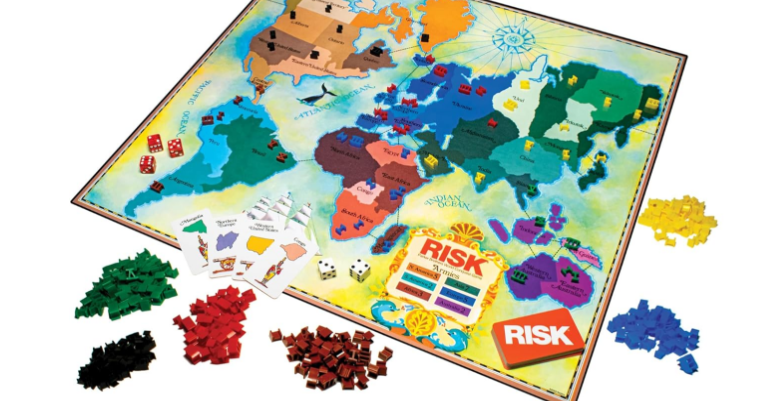
Alright, let’s talk about dealing with teen defiance. It’s like playing a high-stakes game of Risk – you’ve got to be strategic, know when to make your move, and be prepared for a few surprises along the way.
With four kids, I’ve been through my fair share of teenage rebellions, and I’ve learned a thing or two about navigating these tricky waters.
Implement effective communication strategies for difficult conversations
You know those conversations you dread having with your teen? The ones about grades, curfews, or gulp dating? Yeah, those can be about as fun as a root canal. But here’s the thing: how we approach these talks can make all the difference.
I remember when I had to talk to my oldest, about his grades. I went in guns blazing, all lecture-mode, and boy, did that backfire! He shut down faster than our wi-fi during a thunderstorm. After that disaster, I knew I needed a new approach.
Here are some communication strategies that have worked wonders for me:
- Choose the right time and place: Don’t ambush them right after school or before bed. Ask when a good time to talk would be.
- Use “I” statements: Instead of “You’re being irresponsible,” try “I’m concerned about your grades because…”
- Listen more than you talk: Give them a chance to explain their side. You might be surprised by what you learn.
- Stay calm: If things get heated, take a break. It’s okay to say, “Let’s pause and come back to this later.”
- Validate their feelings: Even if you disagree, acknowledge their emotions. “I can see why you’re frustrated.”
According to a study by the University of Washington, teens whose parents use these positive communication strategies are 67% more likely to open up about important issues. That’s huge!
Establish clear, reasonable boundaries and expectations
Setting boundaries with teens can feel like trying to fence in a tornado. But let me tell you, it’s so important. Kids actually feel safer and more secure when they know what the limits are – even if they’d never admit it!
In our house, we have a family meeting at the start of each school year to set our ground rules. Everyone gets a say, which helps the kids feel like they have some control. Of course, there was the year my son tried to negotiate a midnight curfew on school nights. Nice try, kiddo!
Related:
Here’s my recipe for setting effective boundaries:
- Be clear and specific: “Be home at a reasonable time” is too vague. “Be home by 10 PM on school nights” is clear.
- Explain the reasons: Kids are more likely to follow rules if they understand the why behind them.
- Be consistent: If the curfew is 10 PM, it’s 10 PM – not 10:15 PM because they batted their eyelashes at you.
- Adjust as they mature: Boundaries should evolve as your teen shows more responsibility.
- Lead by example: If you want them to limit screen time, you’ve gotta put down your own phone too.
Develop natural and logical consequences for broken rules

Okay, let’s talk consequences. Gone are the days when “Because I said so!” was enough. Teens need to understand that their actions have real-world impacts.
I learned this lesson the hard way when my daughter kept leaving her dirty dishes in the sink. Nagging didn’t work. Taking away her phone didn’t work.
Then one day, I said, “When the dishes are put in the dishwasher, then you can go hang out with your friends”. Guess who suddenly remembered how to use the dishwasher?
Here’s the secret sauce to effective consequences:
- Make them related: If they’re late for curfew, they get an earlier curfew next time. Simple cause and effect.
- Keep them reasonable: The punishment should fit the crime. No grounding for a month over a missed chore.
- Follow through: Don’t make threats you’re not willing to enforce. Empty threats = zero respect.
- Involve them in the process: Ask, “What do you think should happen if you break this rule?” You might be surprised by their sense of fairness.
- Focus on learning, not punishment: The goal is to teach responsibility, not to make them suffer.
The American Academy of Pediatrics says that natural and logical consequences are more effective than punitive discipline in promoting long-term behavior change. And let me tell you, it works!
Navigate the treacherous territories of teen-parent negotiations
Sometimes parenting a teen feels like you’re a diplomat trying to broker peace between warring nations. But fear not! With the right approach, you can turn potential battles into productive discussions.
I’ll never forget the Great Cell Phone Debate of 2009. My oldest wanted a smartphone, and I wasn’t sure he was ready. We were at a stalemate until I remembered a key negotiation tactic: find common ground.
Here’s my survival guide for teen-parent negotiations:
- Listen to their side: Really try to understand their perspective. It shows respect and opens the door for compromise.
- Be willing to compromise: Maybe they can’t have everything they want, but can you meet halfway?
- Set clear terms: If you do reach an agreement, make sure everyone understands the details.
- Use “when-then” statements: “When you can show me you can handle the responsibility of X, then we can talk about Y.”
- Know your non-negotiables: Some things aren’t up for debate, and that’s okay. Just be clear about what those are.
- Revisit and revise: As your teen grows and matures, be open to renegotiating previous agreements.
A study in the Journal of Research on Adolescence found that families who engage in collaborative problem-solving have teens who are more socially competent and have better relationships with their parents.
So, those sometimes-frustrating negotiations? They’re actually good for your kid!
Remember, addressing teen defiance isn’t about winning or losing. It’s about guiding our kids towards becoming responsible, independent adults.
And just like in Risk, sometimes you’ve gotta take a calculated risk to win the game. Stay strong, fellow parents. We’ve got this!
4. Pictionary: Illustrating the Power of Modeling Positive Behavior
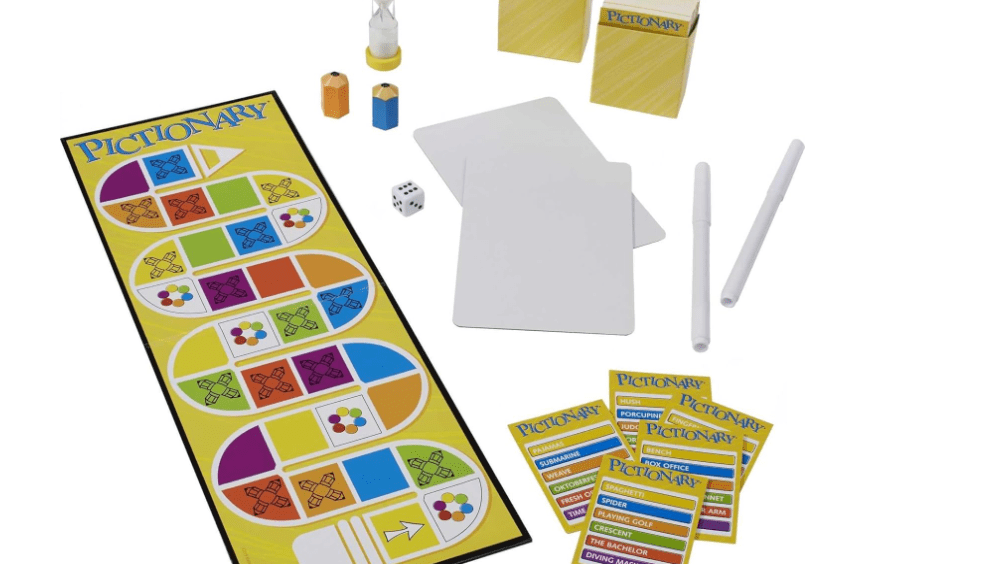
You know how in Pictionary, you’re trying to get your team to guess what you’re drawing? Well, parenting teens is kinda like that, except instead of drawing pictures, we’re sketching out behaviors we want our kids to copy.
And let me tell you, sometimes it feels like I’m playing with my eyes closed and my non-dominant hand!
Lead by example in managing emotions and resolving conflicts
Okay, let’s talk about keeping your cool when everything’s hitting the fan. It’s not easy, but it’s so important. Our teens are watching us like hawks, even when we think they’re not paying attention.
I remember this one time when my oldest two kids were having an epic battle over the TV remote. I was tired, stressed, and about this close to losing it.
But then I caught my oldest watching me, waiting to see how I’d handle it. Talk about pressure! I took a deep breath, counted to ten in my head, and calmly separated them.
Was it what I wanted to do? Heck no. I wanted to yell and throw that remote out the window! But I knew I had to model the behavior I wanted to see.
Here are some tricks I’ve learned for managing emotions and conflicts:
- Use the “STOP” technique: Stop, Take a breath, Observe your feelings, Proceed mindfully.
- Name your emotions out loud: “I’m feeling frustrated right now, so I’m going to take a moment to calm down.”
- Use “I” statements: “I feel upset when…” instead of “You always…”
- Take a timeout if needed: It’s okay to say, “I need a few minutes to cool off before we discuss this.”
Did you know that according to a study in the Journal of Family Psychology, teens whose parents model positive emotional regulation are 40% more likely to handle their own emotions effectively? That’s some powerful motivation right there!
Demonstrate respect and empathy in your interactions with others

Alright, let’s chat about respect and empathy. These are biggies, folks. If we want our teens to treat others with kindness and understanding, we’ve gotta walk the walk ourselves.
I’ll never forget the day my son called me out for being rude to a cashier at Walmart. Talk about a wake-up call!
I was mortified, but also secretly proud that he recognized disrespectful behavior. It was a great opportunity to apologize and show him how to make things right.
Here’s how I try to model respect and empathy in my daily life:
- Listen actively: Put down the phone, make eye contact, and really tune in when someone’s talking.
- Validate feelings: Even if you disagree, acknowledge the other person’s emotions.
- Practice random acts of kindness: Hold the door, offer to help a neighbor, leave a nice note for the mail carrier.
- Apologize sincerely when you mess up: No one’s perfect, and owning our mistakes shows strength, not weakness.
The Gottman Institute found that children who grow up in homes where empathy is regularly demonstrated are more likely to have successful relationships and higher emotional intelligence. So, every time we show empathy, we’re investing in our kids’ future happiness!
Show consistency between your words and actions
Let’s talk about walking the talk. Kids have built-in hypocrisy detectors, I swear. They can spot a “do as I say, not as I do” situation from a mile away.
I learned this lesson when I was trying to get my kids to cut down on screen time. There I was, lecturing them about the importance of face-to-face interaction while simultaneously checking my phone when they were telling me a story. Yeah, not my finest parenting moment.
Here are some ways I’ve tried to align my words and actions:
- Set family rules that apply to everyone: If phones aren’t allowed at the dinner table, that goes for parents too.
- Follow through on promises: If you say you’ll be at their game, be there.
- Admit when you’re wrong: If you make a mistake, own up to it and apologize.
- Practice what you preach: If you want them to read more, let them see you reading.
A survey by the Pew Research Center found that 65% of teens say their parents are sometimes hypocritical about following rules.
Ouch! But that means we have a real opportunity to make a positive impact by being consistent.
Sketch out a blueprint for the behavior you want to see in your teen

Okay, time to put on our architect hats and design the blueprint for our kids’ behavior. This isn’t about creating perfect little robots, but about nurturing the qualities we hope to see in them as they grow.
Consider a family motto like: “Be kind, work hard, and always do your best.” It’s simple, but it covers a lot of ground. We try to live by this motto in everything we do, from how we treat each other to how we approach our responsibilities.
Here’s how you can create your own behavioral blueprint:
- Identify core values: What matters most to your family? Honesty? Compassion? Perseverance?
- Model these values daily: Look for opportunities to demonstrate them in action.
- Praise effort over outcome: Celebrate when your teen tries to embody these values, even if they don’t always succeed.
- Share stories: Talk about times when you or others have lived out these values and the impact it had.
- Create visual reminders: Maybe a family mission statement on the fridge or a values board in the living room.
According to research published in the Journal of Adolescence, teens who can clearly articulate their family’s values are less likely to engage in risky behaviors.
So, making our values explicit and living them out loud can have a real protective effect.
Remember, we’re not aiming for perfection here. We’re human, and we’re gonna mess up sometimes. But every time we model positive behavior, we’re adding another brushstroke to the picture of the adults we hope our teens will become.
It’s like a never-ending game of Pictionary, but the prize is way better than just winning a round. We’re shaping the next generation, one sketch at a time. So grab your metaphorical pencil and start drawing – you’ve got this!
5. Clue: Solving the Mystery of Effective Consequences

Let me tell you, figuring out how to discipline teens is like playing a never-ending game of Clue. Just when you think you’ve solved the mystery, they throw you a curveball!
But after raising four kids, I’ve picked up a few tricks that might help you crack the case of effective consequences.
Distinguish between punishment and constructive consequences
Okay, let’s get real for a second. When our teens mess up, our first instinct might be to lay down the law and dish out some old-school punishment. Been there, done that, got the defiant teenager t-shirt to prove it!
I remember when my oldest, missed his curfew for the third time in a month. My husband and I were so mad, we grounded him for two weeks and took away his phone.
Guess what happened? He sulked, gave us the silent treatment, and learned absolutely nothing. Talk about a parenting fail!
That’s when I realized there’s a big difference between punishment and constructive consequences. Here’s the deal:
- Punishment is about making kids suffer for their mistakes. It’s reactive and often doesn’t teach anything except resentment.
- Constructive consequences, on the other hand, are about teaching responsibility and helping kids learn from their actions.
According to the American Academy of Pediatrics, constructive consequences are more effective in promoting long-term behavior change than punitive measures. Who knew?
Here’s a quick cheat sheet to help you spot the difference:
- Punishment is often unrelated to the misbehavior, while constructive consequences are logically connected.
- Punishment focuses on past actions, while constructive consequences look towards future behavior.
- Punishment is usually imposed by the parent, while constructive consequences can often be agreed upon together.
Create age-appropriate consequences that teach responsibility

Now, let’s talk about tailoring consequences to your teen’s age and maturity level. What works for your 13-year-old might be a total flop for your 17-year-old. Trust me, I learned this the hard way!
When my second child, was 14, she kept “forgetting” to do her chores. I tried taking away her allowance, but it didn’t seem to faze her. Then I remembered a tip from my parenting group: make the consequence fit the crime.
So, we sat down together and came up with a plan. For every chore she missed, she had to do an extra one the next day. Suddenly, those chores started getting done like magic!
Here are some age-appropriate consequences I’ve found effective:
For younger teens (13-15):
- Extra chores related to their misbehavior
- Earlier bedtime if they’re cranky due to lack of sleep
- Loss of screen time for misuse of technology
For older teens (16-18):
- Loss of car privileges for irresponsible driving
- Paying for their own phone bill if they exceed data limits
- Taking on more household responsibilities if they want more freedom
The key is to make the consequences teach something valuable. A study in the Journal of Adolescence found that teens who experience logical consequences are more likely to develop critical thinking skills and take responsibility for their actions.
Related:
Age Appropriate Discipline Chart FREE Printable
Implement time-out strategies for teens (and yourself!)
Now, I know what you’re thinking. “Time-outs? Aren’t those for toddlers?” Well, hold onto your hats, because time-outs can be super effective for teens too – just with a little twist.
I’ll never forget the day my son and my husband were having an epic shouting match about his messy room. My husband was red-faced and neither one was listening to each other at all. That’s when I remembered the “pause button” technique I’d learned in a parenting workshop.
I took a deep breath and said, “I think you both need a time-out. Let’s take 15 minutes to cool off and then come back to this conversation.” And you know what? It worked like a charm. They both had time to calm down and when they came back, they actually listened to each other.
Here are some time-out strategies that have saved my sanity:
- The 15-minute cool-down: When emotions are running high, take a short break before continuing the discussion.
- The “calm corner”: Designate a space in your home where family members can go to decompress.
- The “write it out” method: Have your teen (or yourself) write down thoughts and feelings before discussing them.
- The physical activity time-out: Sometimes a quick walk or some jumping jacks can help burn off that angry energy.
Remember, time-outs aren’t just for your teens – they’re for you too! The American Psychological Association says that taking brief breaks during conflicts can help reduce stress and improve problem-solving skills.
Related:
The Ultimate Guide to Time-Ins
Crack the code of consequences that actually work

Alright, are you ready for the secret sauce? The holy grail of parenting teens? Here’s how to create consequences that actually make a difference:
- Make them relevant: The consequence should be directly related to the behavior you’re trying to change.
- Keep them reasonable: Don’t go overboard. The punishment should fit the crime, as they say.
- Be consistent: Follow through every single time, or your words will lose their power.
- Involve your teen in the process: Let them have a say in determining appropriate consequences.
- Focus on learning, not suffering: The goal is to teach, not to make them miserable.
I’ll share a little success story with you. My daughter was constantly leaving her dirty dishes in the sink. Nagging didn’t work, and taking away privileges seemed unrelated.
So, we had a family meeting and decided together: if dishes were left in the sink, she’d be responsible for doing everyone’s dishes for the next meal.
Guess what? Those dishes started finding their way to the dishwasher real quick! And the best part? She learned about responsibility without any shouting matches or slammed doors.
Here’s a mind-blowing stat for you: According to a survey by the Society for Research in Child Development, teens who participate in creating their own consequences are 60% more likely to follow through and learn from the experience. How cool is that?
Remember, cracking the code of effective consequences is an ongoing process. What works today might not work tomorrow, and that’s okay.
The important thing is to keep communicating, keep trying, and keep loving your teen through it all. You’ve got this, detective!
Related:
Natural Consequences Definition and Examples
6. Scrabble: Crafting a Vocabulary for Positive Communication

You know how in the game of Scrabble, you’re always trying to find the perfect word to score big points? Well, communicating with teens is a lot like that.
You’ve gotta choose your words carefully to really connect with them. And let me tell you, as a mom of four, I’ve played this game more times than I can count!
Master the art of “I” statements to express concerns without blame
Okay, let’s talk about “I” statements. These little gems are like the triple word scores of teen communication. They let you express your concerns without putting your kid on the defensive. Trust me, I learned this the hard way!
I remember when my oldest, started coming home way past his curfew. My first instinct was to go full mom-mode: “You’re so irresponsible! Don’t you care about the rules?”
Yeah, that went over about as well as a lead balloon. All I got was eye-rolls and the silent treatment.
Then I learned about “I” statements, and it was like someone flipped a switch. Instead of accusing, I said, “I feel worried when you’re not home by curfew because I care about your safety.” Suddenly, we were having a conversation instead of a shouting match.
Here’s how to craft a killer “I” statement:
- Start with “I feel…” (worried, frustrated, concerned)
- Follow with “when…” (describe the situation)
- End with “because…” (explain the impact)
- For example: “I feel frustrated when the dishes are left in the sink because it makes extra work for everyone.”
According to a study in the Journal of Adolescence, teens whose parents use “I” statements are 40% more likely to respond positively to concerns. That’s a pretty sweet score, if you ask me!
Learn how to validate your teen’s feelings while addressing behavior
Alright, let’s chat about validation. This is like the blank tile in Scrabble – it can be a total game-changer if you use it right.
I’ll never forget the day my son came home fuming about a teacher he thought was unfair. My first instinct was to jump in with advice, but I caught myself. Instead, I tried something new: “It sounds like you’re really frustrated with your teacher. That must be tough to deal with.”
The look on his face was priceless. It was like he was shocked that I actually got it. From there, we were able to have a real conversation about how to handle the situation constructively.
Here’s my cheat sheet for validating feelings:
- Listen without interrupting
- Reflect back what you hear: “It seems like you’re feeling…”
- Avoid minimizing their feelings: Don’t say “It’s not a big deal”
- Separate feelings from behavior: “I understand you’re angry, but it’s not okay to yell”
The American Psychological Association says that emotional validation can significantly improve parent-teen relationships. It’s like scoring a 50-point bonus in the game of parenting!
Develop a repertoire of phrases that encourage cooperation

Now, let’s build your cooperation vocabulary. These phrases are like those two-letter words in Scrabble that don’t seem like much, but can really add up.
In our house, we used to have epic battles over chores. It was always, “Clean your room!” followed by groans and procrastination.
Then I stumbled upon the magic of choice: “Would you rather clean your room before or after dinner?” Suddenly, my kids were actually doing their chores without a fight. It was like finding the Holy Grail of parenting!
Related:
25 Best Words of Encouragement
Here are some cooperation-boosting phrases I swear by:
- “What’s your plan for…?” (Instead of giving orders)
- “How can I help you…?” (Shows you’re on their team)
- “When…then…” (“When your homework is done, then you can watch TV”)
- “Let’s…” (Invites cooperation: “Let’s figure this out together”)
Pro tip: The tone of your voice matters as much as the words. Keep it calm and neutral, even if you’re seething inside. (Easier said than done, I know!)
A study by the Center for Parent and Teen Communication found that using cooperative language can reduce parent-teen conflicts by up to 30%. Now that’s what I call a high-scoring move!
Score big with words that build connection instead of creating distance
Okay, time for the grand finale: connection-building words. These are your power plays, folks. Use them right, and you’ll be racking up the points in no time.
I remember a particularly rough patch with my daughter. Every conversation felt like a battle. Then I started sprinkling in some of these magic words, and it was like watching a flower bloom. Suddenly, we were talking again – really talking.
Here’s my list of connection-building all-stars:
- “I love you” (Never underestimate these three words)
- “I’m proud of you” (Be specific about why)
- “I believe in you” (Especially when they’re doubting themselves)
- “I’m here for you” (And mean it)
- “Thank you” (For the big and small things)
- “I’m sorry” (When you mess up – because we all do)
Use these liberally, but make sure you mean them. Kids have built-in BS detectors, I swear!
Here’s a mind-blowing stat for you: Research from the University of Washington shows that teens who report feeling emotionally connected to their parents are 65% less likely to engage in risky behaviors. That’s like scoring a triple-triple word score in the game of life!
Remember, crafting a positive communication vocabulary is an ongoing game. Some days you’ll feel like a Scrabble champion, and others you’ll be staring at a rack full of Qs and Zs.
But keep playing, keep trying new words, and before you know it, you and your teen will be master communicators.
And hey, even if you flub a word now and then, it’s okay. We’re all learning as we go. The important thing is to keep the game going, one word at a time. You’ve got this, word wizards!
7. Chess: Strategizing Long-Term Solutions for Lasting Change

Alright, let’s talk about playing the long game when it comes to managing teen defiance. It’s kind of like the game of chess – you’ve gotta think several moves ahead and be ready to adjust your strategy on the fly. Trust me, with four kids, I’ve had plenty of practice at this particular game!
Create a behavior contract with your teen’s input
So, behavior contracts. They sound all formal and stuffy, right? But let me tell you, they can be a total game-changer. It’s like setting up the board before you start playing – everyone knows the rules and what’s at stake.
I remember when my oldest was struggling with his grades. We were butting heads constantly about homework and study time.
One day, in a moment of desperation (and maybe a little chocolate-induced brilliance), I suggested we sit down and create a contract together.
At first, he looked at me like I’d grown a second head. But as we started talking, something amazing happened. He actually had some great ideas about how to manage his time better.
We hashed out a plan that included study hours, break times, and consequences for missed assignments. And you know what? It worked!
Here’s how to create a killer behavior contract:
- Sit down together when everyone’s calm
- Clearly define the behaviors you want to see
- Set specific, measurable goals
- Agree on rewards for meeting goals and consequences for not meeting them
- Put it in writing and have everyone sign it
- Review and revise regularly
According to a study by the American Academy of Pediatrics, teens who participate in creating their own behavior plans are 60% more likely to stick to them. That’s a pretty sweet success rate!
Implement a reward system for positive behavior
Okay, let’s chat about rewards. Now, I know what you’re thinking – “Shouldn’t my kid just do what they’re supposed to do without getting a prize?” I used to think the same thing. But here’s the deal: everyone likes to be recognized for their efforts, even us adults!
I learned this lesson with my daughter. She was always forgetting to do her chores, and I was tired of nagging. So we set up a simple point system. Every chore completed on time earned a point, and points could be traded in for privileges like extra screen time or a later bedtime on weekends.
The transformation was like magic. Suddenly, chores were getting done without me having to say a word. It was like finding the Holy Grail of parenting!
Related:
Positive Reinforcement Parenting: Transform Your Family
Here are some tips for setting up a reward system:
- Keep it simple and easy to track
- Make sure the rewards are things your teen actually wants
- Include a mix of small, daily rewards and bigger, long-term goals
- Be consistent in giving out points or rewards
- Adjust the system as needed – what works now might not work in six months
A study from the Journal of Applied Behavior Analysis found that positive reinforcement systems can increase desired behaviors by up to 80%. Now that’s what I call a winning move!
Develop problem-solving skills together as a family

Let’s talk about turning your family into a crack team of problem solvers. This is like teaching your kids to think several moves ahead in chess – it’s a skill that’ll serve them well long after they’ve left the nest.
In our house, we started having weekly family meetings. At first, it was about as popular as a pop quiz on a Friday afternoon.
But over time, it became this awesome space where we could all bring up issues and brainstorm solutions together.
I’ll never forget the time my youngest, brought up that she was being bullied at school. Instead of just telling her what to do, we all put our heads together to come up with strategies.
Seeing her older siblings offer advice and support was one of those heart-melting mom moments, you know?
Related:
How to Have a Successful Family Meeting
Here’s how we structure our problem-solving sessions:
- Define the problem clearly
- Brainstorm possible solutions (no idea is too crazy at this stage!)
- Evaluate the pros and cons of each solution
- Choose a solution to try
- Make a plan to implement it
- Set a time to review and adjust if needed
The Center for Parent and Teen Communication reports that families who regularly engage in collaborative problem-solving have teens who are 40% more likely to make responsible decisions independently. How’s that for some positive peer pressure?
Plan your moves carefully to outmaneuver recurring conflicts
Alright, let’s talk strategy for those conflicts that keep popping up like whack-a-mole. You know the ones – bedtime battles, homework hassles, the eternal “clean your room” saga. These are like those tricky chess situations where you keep ending up in the same spot, move after move.
I used to feel like a broken record with my son, about his messy room. It was the same argument, day after day. Then I realized I needed to change my approach. Instead of focusing on the mess, we talked about why having a clean room mattered.
Turns out, he was struggling to find things in the morning and it was making him late for school. Once we identified that as the real issue, we were able to come up with a system that worked for him.
Here are some strategies for outmaneuvering those recurring conflicts:
- Identify the underlying issue – what’s really causing the problem?
- Look for patterns – when does the conflict usually occur?
- Anticipate and plan ahead – can you head off the problem before it starts?
- Be willing to compromise – maybe a partially clean room is better than a constantly messy one
- Use humor to defuse tension – sometimes a good laugh can reset the whole situation
The American Psychological Association suggests that parents who take a proactive, problem-solving approach to conflicts see a 50% reduction in recurring issues with their teens. That’s like checkmating those pesky problems!
Remember, parenting teens is a marathon, not a sprint. Some days you’ll feel like a grandmaster, others like you can barely remember how the pieces move.
But keep playing, keep strategizing, and keep loving your kids through it all. You’ve got this, chess champions!
And hey, even if you feel like you’re in checkmate sometimes, remember: in chess, as in parenting, there’s always another game to play.
So take a deep breath, reset the board, and get ready for your next brilliant move. You’re doing great!
Conclusion on Managing Teen Defiance:
Congratulations! You’ve now got a toolbox full of positive discipline strategies to help you manage teen defiance.
Remember, this journey isn’t about winning every battle – it’s about building a strong, loving relationship that will last long after the storm of adolescence has passed.
Stick with these techniques, and you’ll likely see a gradual shift in your teen’s behavior and your family dynamics. It won’t always be easy, but it will be worth it.
You’ve got this, parent! Now go forth and positively discipline with confidence. And hey, if all else fails, there’s always the option of hiding in the closet with a secret chocolate stash. (Just kidding… maybe.)
GET FREE ACCESS TO OUR LIBRARY OF FREE PRINTABLES AND RESOURCES!
Enter Your Name and Email for FREE Access to our Library of FREE Home and Family Printables Series!

